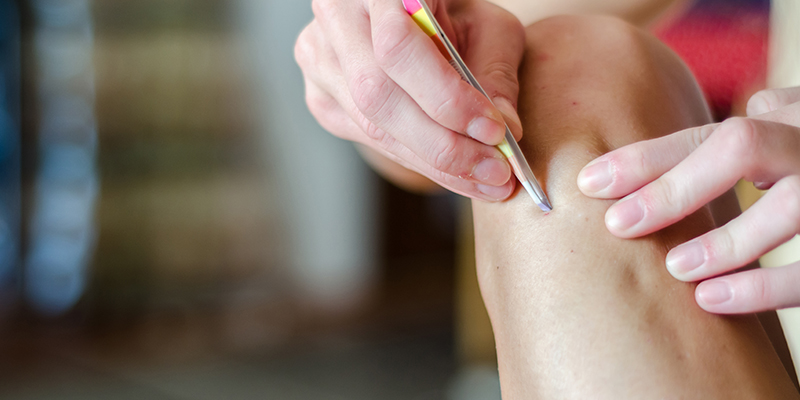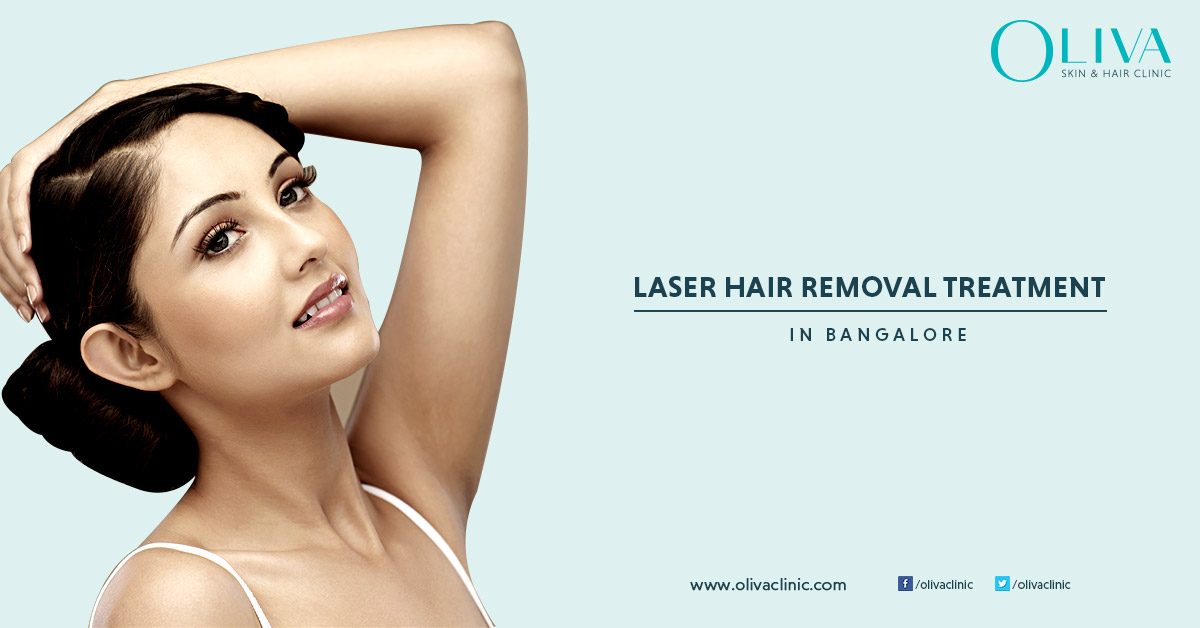What Is An Ingrown Hair & How To Remove It?
Ingrown hair can be painful and displeasing. They may also result in red spots on the skin that are raised and cause immense pain. If proper care is not taken they can be infected and secrete pus-like fluid. Ingrown hair is apparent and needs to be treated for cosmetic as well as physiological reasons.
What Is An Ingrown Hair?
Ingrown hair, as the name suggests; is the hair which has curled back and has begun growing inwards, away from the skin. Usually, a normal and straight growing hair, on a healthy hair follicle, begins to grow inward and embed deeper into the skin. They are a common sight on cheeks, chin, neck, legs, buttocks, pubic areas, etc. They may also appear on the scalp, for those who shave their head. It maybe red and painful also pus-filled in some cases. They may also cause a lot of itch and are a larger cause of concern for people with curly hair.
What Does An Ingrown Hair Look Like?

The graphic depicts the actual growth of an ingrown hair from a healthy hair follicle. They are small, round, solid and bumpy almost like a pustule with blistering. They cause hyperpigmentation or skin darkening along with pain and itchiness. Sometimes even the embedded hair can be seen growing inward.
What Causes Ingrown Hair?
Ingrown hair is that hair which may have grown out of the skin, curled back and again grown inside the skin, with lesions or red bumps left on the skin surface. Some of the hair does not even leave the skin they just begin growing inside from the follicle itself. The major causes or ingrown hair include
- Improper Shaving Or Shaving Too Close – When shaving is done in the wrong direction, it can cause a hair to curl and penetrate back into the skin. This can lead to an ingrown hair under the skin. Another reason is when you shave the skin too closely.
- Waxing In The Wrong Direction – Like shaving, removal of body hair through waxing can aggravate the chances of one or more hair strands to curl back and cause ingrown hair cysts. Since waxing is done in areas like legs, hands, underarms, and pubic regions, therefore it is one of the common reason for an ingrown hair cyst.
- Aggressive Hair Removal – Be it any hair removal method, such as shaving, tweezing or waxing, if done brutally, it can cause ingrown hair.
- Friction From Tight Clothing – When you wear or take off tight clothes, your hair rub against the cloth in the wrong direction and this may lead to an ingrown hair cyst.
People, Who Are More Prone To Getting Ingrown Hair?
- People with curly and coarse hair are more prone to ingrown hair, as this kind of hair is easy to bend back and grow inward.
- People with high level of sex hormone can cause a lot of hair growth thus chances of ingrown hair also increases.
- Pseudo folliculitis is common in some men of colour, which is also known as razor bumps that grow due to sharp edges of a razor and result in bunches of ingrown hair.
- Dry hair can be a cause of ingrown hair as the skin loses hydration and thus hair does not grow out from the skin, rather they curl inward.
- This condition is more prevalent in men than in women as men have thick hair on their body.
Also Read: What Causes Unwanted Hair On Body & How To Remove It?
Which Body Parts Are Possible Affected By Ingrown Hair?
In men these ingrown hair form like a bunch of small bumps on the skin, especially on the cheek, chin and neck soon after shaving. They are also seen on people who shave their head. In women, ingrown hair is more common on legs, arms, armpits, hands, pubic area and most of the areas which are waxed or shaved often.
How To Get Rid of Ingrown Hair?
There are a number of methods to get rid of ingrown hair effectively. They must first be checked with an expert dermatologist before attempting to pursue any of the below. Also do not go ahead with home remedies or DIY treatments as they can severe the condition and even result in spreading the infection.
Laser Hair Removal –
Laser hair removal is the most effective treatment for ingrown hair. It not just removes the ingrown hair but also renders the hair follicle ineffective thus no more ingrown hair. Laser hair removal works on the principal of selective photothermolysis STPL with a specific wavelength of light and pulse. The light energy penetrates deeper into the skin on hair stem cells resulting in permanent hair reduction as it kills the hair follicle itself. The root cause of the problem itself is caught by Laser hair removal and even the problem of excess hair growth is alleviated along with treating ingrown hair. This treatment also helps in curing hyperpigmentation, pustules and other lesions on the skin. Indian skin colour responds very well to LHR and it is a cost-effective method when compared to monthly or weekly traditional hair removal methods.
Also Read: How Much Does Laser Hair Removal Cost In India?
Chemical Peels –
They are a plant extract based exfoliation under controlled conditions at a skin clinic. They can help in preventing and curing ingrown hair in addition to removing dead skin cells. Especially glycolic acid and salicylic acid can help in treating ingrown hair also keeping the skin pores unclogged too.
Medications And Antibiotics –
Retinoids like tretinoin (Renova, Retin-A) can help in exfoliating, thus removing the dead skin cells. In addition, some steroids may be prescribed by your dermatologist to reduce the inflammation and redness. Additionally, oral and topical antibiotics may also be prescribed to prevent any infection at the site of ingrown hair.
How To Prevent Ingrown Hair?
- Let your hair grow and do not use traditional methods like shaving, tweezing, waxing or plucking
- Get full body LHR done to not just reduce the hair permanently but also cure the problem of ingrown hair to a large extent.
- , and do not shave too closely as bacteria may enter the tiny skin openings. Use gel and warm water while shaving.
- Wax in the direction opposite to the hair growth
- Use a sharp single bladed razor for shaving
- Exfoliate your skin regularly to get rid of dead skin cells
- Moisturize and deep cleanse to prevent dry and flaky conditions that can trigger the growth of ingrown hair.
Also Read: Hair Removal Creams Vs. Laser Hair Removal – Which Is Better?
Ingrown hair can be extremely painful and unsightly, if left untreated they can be infected and form blisters with hyperpigmentation. In addition to getting dermatologist consultation at the earliest, it is also very important to maintain proper skin care routine to prevent and cure this skin condition from worsening.

















